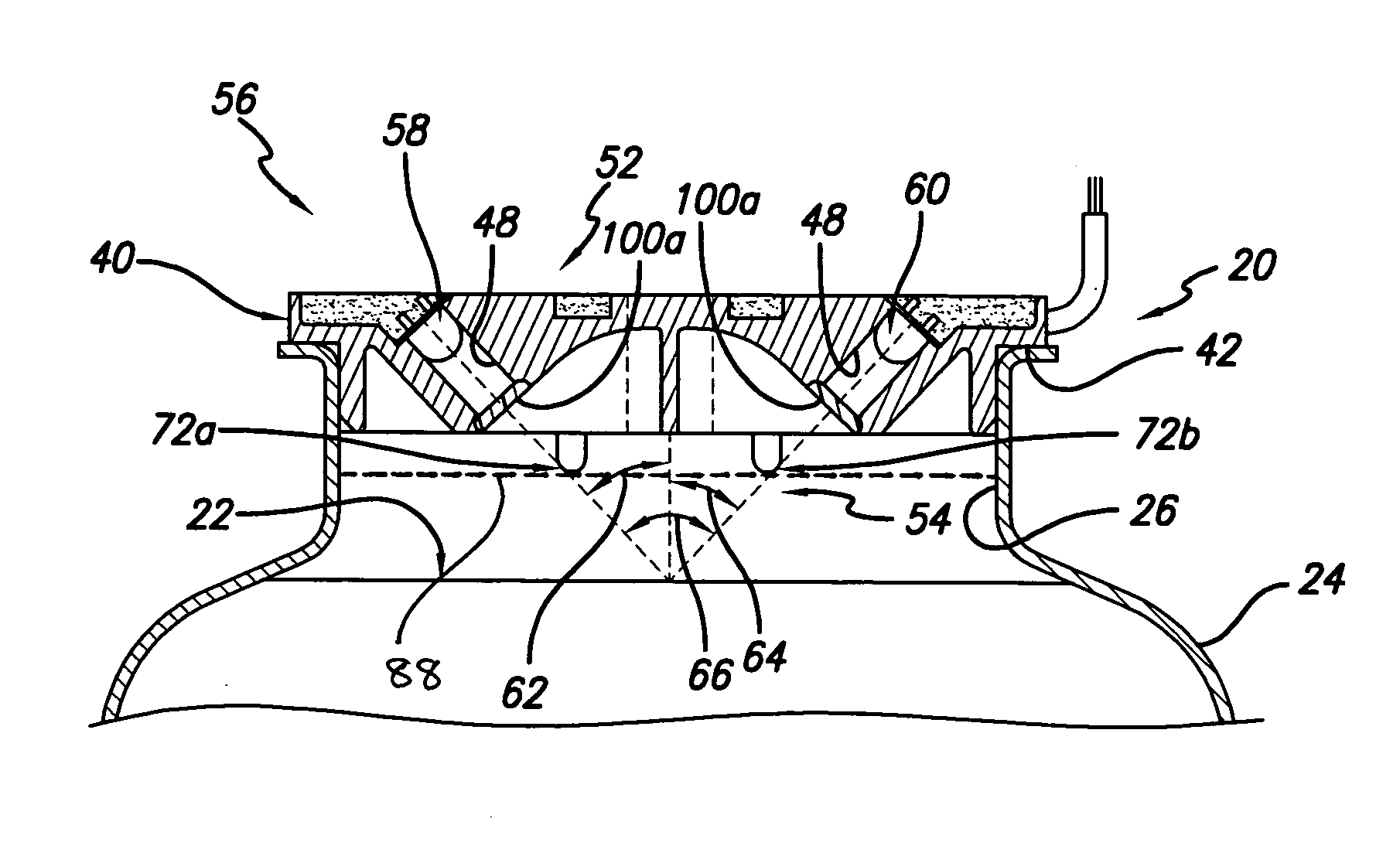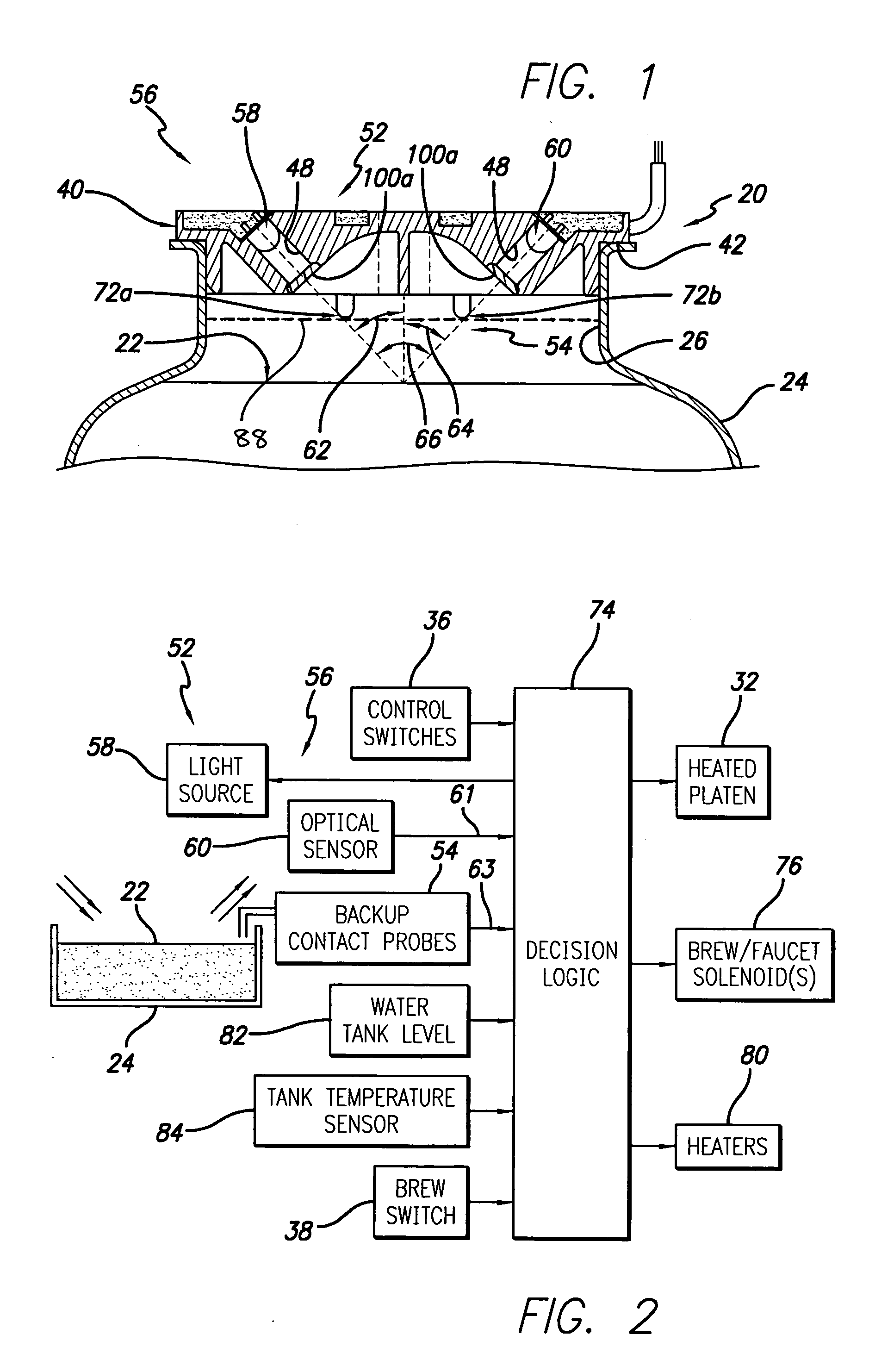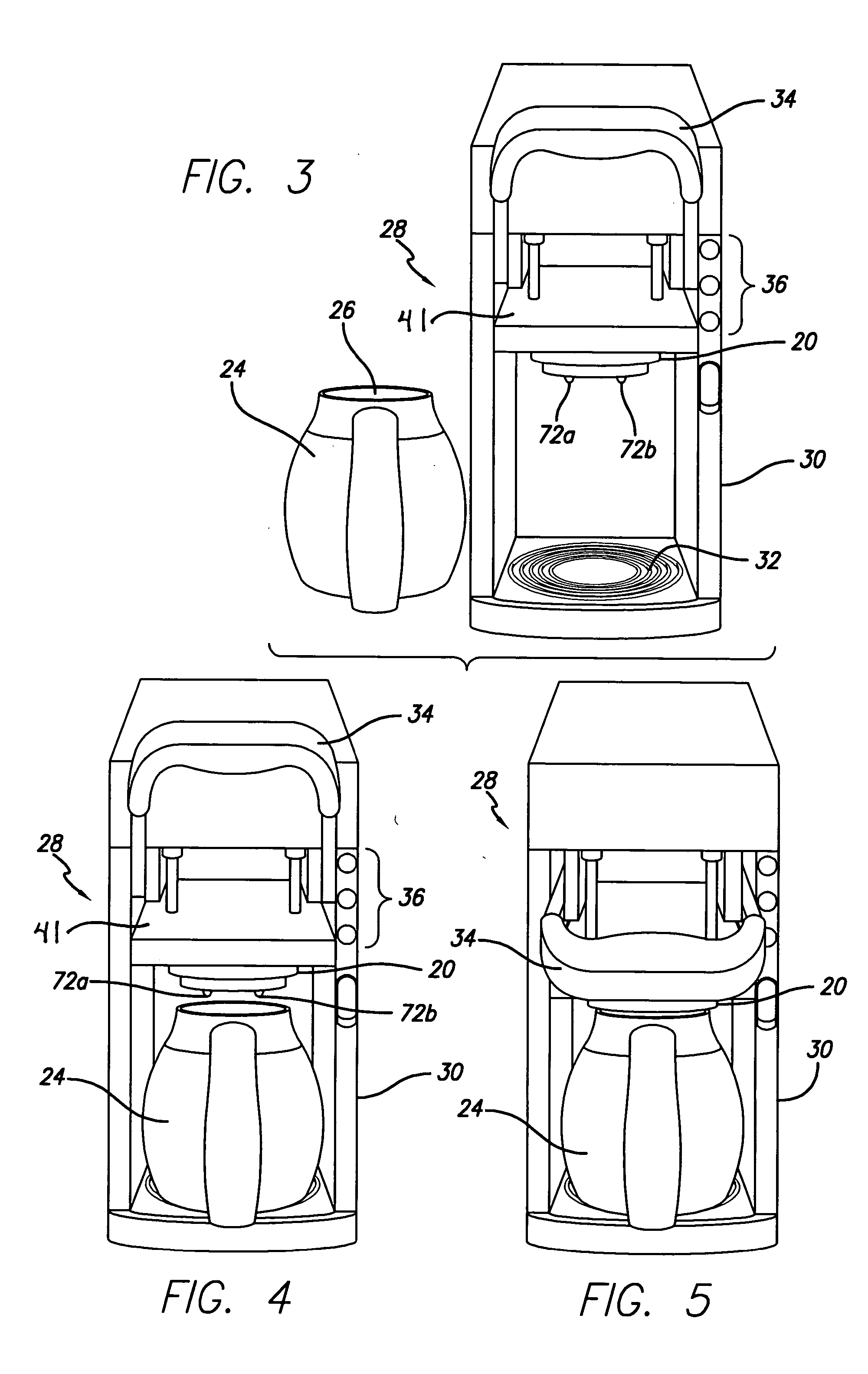[0009] In one presently preferred embodiment, the apparatus includes a support housing adapted to mate with the upper opening of the container, primary liquid level sensing means mounted in the support housing for non-intrusively measuring the level of the surface of the liquid in the container; and secondary liquid level sensing means mounted in the support housing for intrusively sensing a predetermined level of the surface of the liquid in the container for preventing accidental overflows in the event of a malfunction of the primary liquid level sensing means.
[0018] In another preferred embodiment, the invention provides for an apparatus for detecting a level of a surface of a liquid in a container having an upper opening, including a support housing adapted to mate with the upper opening of the container, and at least one primary retractable liquid level sensing probe pivotally mounted in the support housing for measuring the level of the surface of the liquid in the container. The apparatus may also further include a secondary liquid level sensing probe fixedly mounted in the support housing for sensing a predetermined level of the surface of the liquid in the container for preventing accidental overflows in the event of a malfunction of the primary liquid level sensing means.
[0019] The present invention also provides for a method for detecting a level of a surface of a liquid in a container having an upper opening, such as for a server container of a beverage maker for a
transport system, such as for aircraft, trains, trucks, buses and the like. A support housing is provided that is adapted to mate with the upper opening of the container, and a primary liquid level sensing means is mounted in the support housing for non-intrusively measuring the level of the surface of the liquid in the container. In one aspect, the primary liquid level sensing means may be an optical sensor device mounted in the support housing for non-intrusively measuring the level of the surface of the liquid in the container, the optical sensor device including a
light emitting device, such as an
infrared light emitting device, for projecting incident light on the surface of the liquid in the container, and a light detecting device, such as a phototransistor, for detecting the incident light reflected from the surface of the liquid in the container. The
light source is typically driven continuously during a brew cycle, but the method of the invention provides for pulsing power to the
light emitting device, allowing the
system to turn the light emitting device on for only a fraction of the time during which the beverage maker is in operation, thus increasing the useful life of the light emitting device, and / or reducing the power requirements. Although the light detecting device typically continuously measures reflected emitted light, the method of the invention similarly provides for monitoring the light detecting device only when the light emitting device is on, so that the liquid level can be detected at various intervals.
[0020] The provision of
protective lenses significantly improves protection of non-intrusive primary liquid level sensors such as light emitting and light receiving devices from direct water condensation. In addition, water condensation forming on and above the lenses will run off the outer surfaces of the
protective lenses, so that the lenses tend to be cleaned from coffee residue during each brew cycle, requiring no special cleaning of the lenses. Since the lenses are hermetically sealed or integrally formed on the support housing housing, no coffee residue can build up between the non-intrusive primary liquid level sensors and the support housing housing. Therefore the optical
system of the invention avoids creation of “
dirt traps” which are unacceptable on
food processing equipment.
[0021] The secondary intrusive
backup liquid level sensing probes also advantageously serve to prevent accidental overflows in case of a malfunction of the primary non-intrusive liquid level sensing device. The
backup probes provide a high reliability system for preventing accidental overflow, and operate in conjunction with primary non-intrusive liquid level
sensing system, so that if one of the liquid level sensing systems fails, the other will stop the brew cycle before the server overflows.
 Login to View More
Login to View More  Login to View More
Login to View More 


